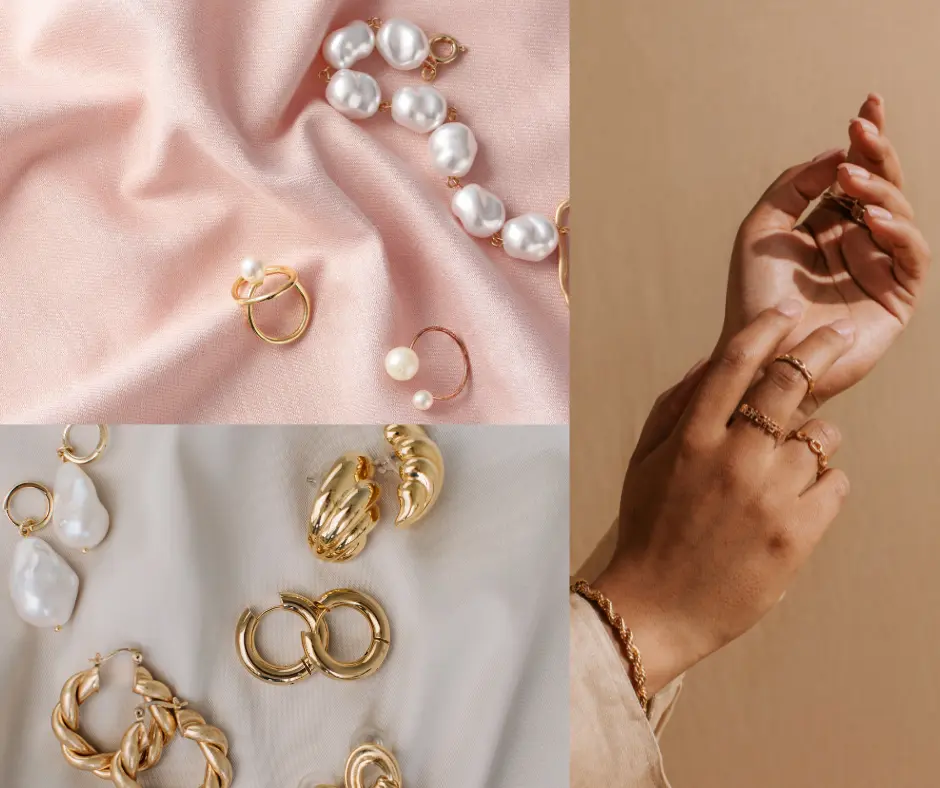Valentine’s day is right around the corner and jewelry is a popular gift to exchange on this romantic holiday. Last year, Americans spent $5.5 billion on jewelry to celebrate Valentine’s Day. Pretty as they are, these accessories are subject to intellectual property protections such as copyrights, trademarks, utility patents, and design patents.
Copyright Protection
Copyrights are an effective tool for protecting jewelry designs. Copyrights grant the creator protections for artistic expressions so long as (1) the expression is original to the creator, and (2) the work is fixed in a tangible form. Jewelry fits into the category of sculpture works pursuant to the Copyright Act. Copyright grants the author exclusive rights in their original work including the rights of reproduction, distribution, and to create derivative works from the original. However, there are some limitations on copyright. The Useful Article doctrine states that if an object has a practical or useful function, copyright protection applies only to the creative elements “that can be identified separately from the utilitarian aspects of an object” and do not extend to the functional portion of the design.
A design has originality if the design is created independently, absent copying anyone else’s creations. The level of creativity required is minimal. Many jewelry designs include elements that are not covered by U.S. copyright law such as circles, squares, or loops. However, the selection and arrangement of such elements in a design may entail the minimal degree of creativity needed to afford the design copyright protections.
Although copyrights exist from the moment the jewelry design is in a tangible form, the copyright must first be registered with the U.S. Copyright Office to commence a lawsuit in federal court for infringement. Once registered, the copyright owner may recover up to $150,000 per protected design for willful infringement. Additionally, the registration serves as prima facie evidence of a copyrighted design’s originality.
In Van Cleef & Arpels Logistics S.A. v. Landau Jewelry, the court held that the military clover insignia design was copyrightable. Despite the commonness of the shape and metal frame, the court’s conclusion was based on the arrangement of elements of the design being sufficiently original. Since the court had established that the design had a valid copyright, the court determined the defendant’s jewelry infringed Van Cleef’s copyright because it was substantially similar to the protected design. There is a two-part test for the “substantially similar” determination: (1) whether the defendant’s product ideas, patterns, themes, organization, and other details were substantially similar to the plaintiff’s copyrighted design, and (2) whether a lay observer would find the “concept and feel” of the defendant’s product designs to be substantially similar to the plaintiff’s protected jewelry design. Thus, there must be a level of originality that distinguishes the similarly designed or “inspired by” jewelry from the original protected design.
Trademark and Trade Dress Protection
Trademarks function as source identifiers for the jewelry allowing for immediate association with the original designer of the piece. Counterfeit jewelry tends to implicate trademark infringement. For example, in 2021 Chanel, famous for its CC monogram trademark, sued jewelry company Shiver and Duke LLC for trademark infringement for selling earrings, bracelets, and necklaces that were designed using Chanel buttons with the CC monogram. The packaging of the jewelry did not state that it was not authorized or associated with Chanel. In its complaint, Chanel alleged that the “Defendants’ jewelry is based on the use of Chanel’s iconic trademark on the jewelry and the use of the CHANEL name to promote and market the jewelry.” Chanel was awarded a permanent injunction and monetary damages for Shiver and Duke’s trademark infringement.
Trade dress is a type of trademark protection that applies when the overall configuration of products or packages serves as identification of their source. To be protectable, trade dress generally requires evidence of “secondary meaning.” A product or jewelry has “secondary meaning” if it functions as a “single source identifier” which means a consumer can immediately recognize the source of the product or jewelry by viewing the design. The factors considered by a court when determining whether a product design has attained secondary meaning include: (1) advertising expenditures, (2) purchaser perception, (3) unsolicited media coverage of the design, (4) number of customers as well as sales success, (5) attempts to plagiarize the product design, and (6) length of time and exclusivity of the use. Packaging or product configurations like Tiffany Blue Boxes® or the LOVE® bracelet by Cartier are examples of trade dress in the jewelry industry.
Design Patent and Utility Patent Protection
A design patent protects the shape or configuration including ornamentation or coloration for jewelry and other inventions. A design patent is generally granted for items with ornamental features such as surface decoration, specific configuration, or distinct shape. The design patent grants protection for 15 years from the filing date.
In 2023, Ox, an independent jewelry brand, sued H&M for allegedly infringing upon its design patent by copying and selling a cheaper version of the patented “Ourglass” design. The design protected consists of two hourglass shaped components that intersect to create one continuous piece which is set with diamonds that are visible from all angles of the jewelry piece.
Less frequently, a piece of jewelry may be protected by a utility patent. A utility patent protects an invention, such as product or process, that is useful, novel, and nonobvious. Examples of utility patents in jewelry include the method in which stones are set or a novel fastener for brooches.
All jewelers run the risk of having their designs infringed by others. If you believe that your IP rights are valuable, then being prepared to assert these rights is instrumental. Insuring your business’s IP risks is something the experts here at IPISC have been doing for over thirty years! Visit our website to connect with us and learn more about what we offer at: https://ipisc.com/solutions/


